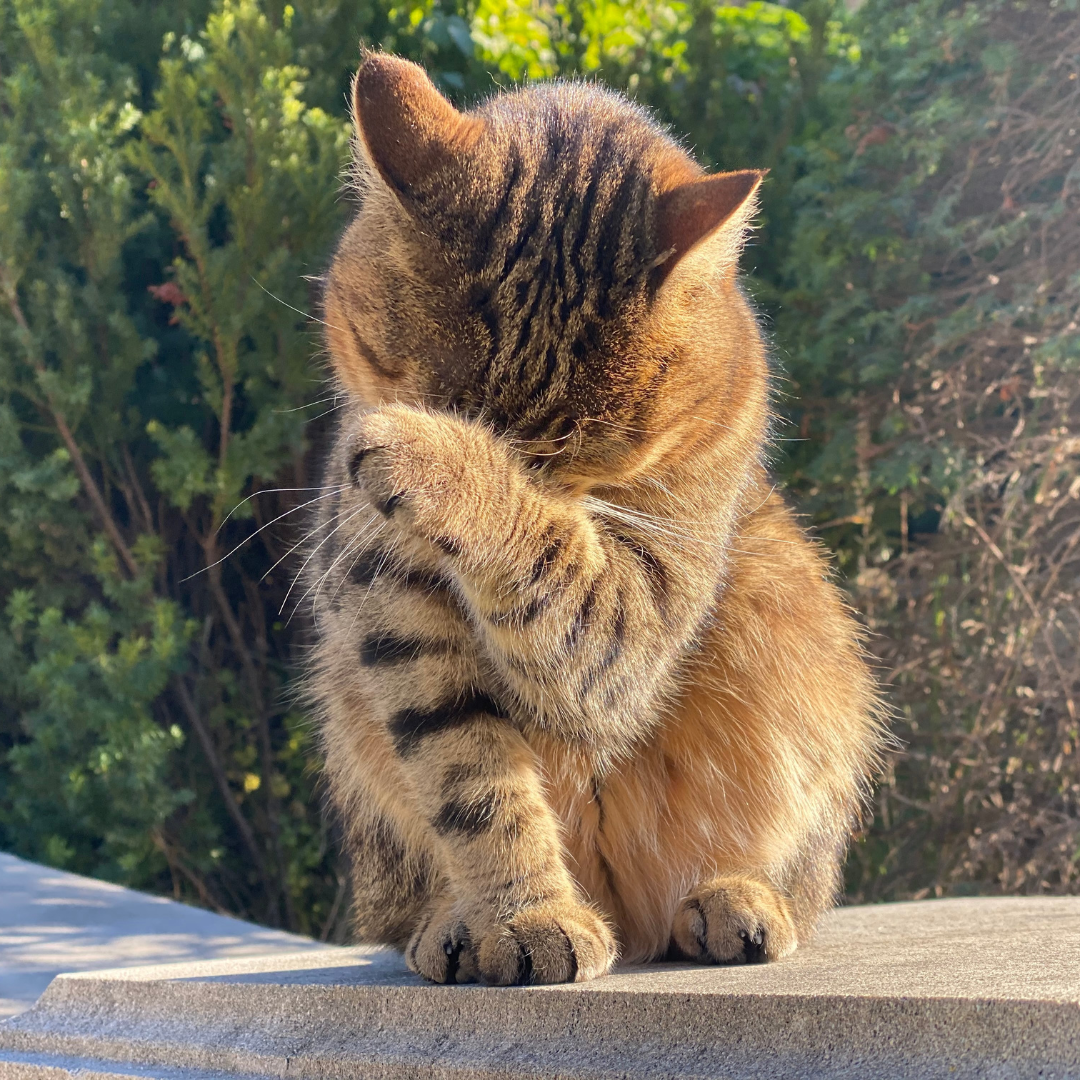
6 Signs of Dental Disease in Cats and Tips on Preventative Care
Share
Dental health is a crucial aspect of your feline friend's overall well-being. However, it is often overlooked by many pet owners, and by the time that a cat is showing symptoms, dental disease may already be in an advanced phase.
Common Types of Dental Disease in Cats
Cats, like humans, can suffer from a variety of dental issues and it's quite common to develop gingivitis (inflammation in the gums), perionditis (a more advanced stage of gum disease that affects the bone and connective tissues underlying the gums), and tooth resorption (a condition that causes the structure of the tooth to break down and be absorbed by the body).
These conditions are uncomfortable, painful and cause difficulty eating, and if left untreated, can lead to other complications such as heart, kidney and liver diseases.
Causes of Dental Disease in Cats
- Plaque and Tartar: A buildup of food particles, saliva and bacteria (plaque), hardens to tartar. This can happen when plaque remains on the teeth for 36 to 48 hours. Plague can be removed with a pet-friendly toothbrush.Or if your cat doesn't tolerate brushing, dental treats and dental toys are a great option.
- Bacterial Buildup: Dental disease in cats is usually caused by a buildup of bacteria.
- Age: Dental problems can affect both young and older cats, with up to 85% of cats aged 3 years and older experiencing dental issues.
-
Immune-compromising viruses: Feline Leukaemia Virus (FeLV) and Feline Immunodeficiency Virus (FIV) increase the risk of dental disease, so if your furry friend has tested positive to one of these viruses, keep an eye on their dental health.
6 Signs and Symptoms of Dental Disease in Cats
1. Bad Breath
If your cat's breath takes your breath away, it could be a sign of dental disease. A buildup of bacteria in your feline friend's mouth can be responsible for foul-smelling breath, along with plaque and tartar.
2. Red, Swollen or Bleeding Gums
Healthy gums in cats are pink and firm. If you notice redness, swelling, inflammation or bleeding at the gum line, it could be a sign of dental disease.
3. Difficulty Eating
If your cat is reluctant to eat or show signs of difficulty or discomfort, it could indicate dental pain. Inflammation and infection in the gums caused by dental disease are painful for your furry friend and should be investigated by a veterinarian.
4. Pawing at the Mouth
If your cat is constantly pawing at their mouth or face, it could be a sign of dental pain. Your kitty may be trying to alleviate the pain by pawing at the affected area.
5. Drooling
Excessive drooling may indicate that your cat is experiencing pain caused by dental disease. Please make an appointment with your veterinarian as soon as possible to have their teeth and gums checked out.
6. Loose or Missing Teeth
Loose or missing teeth in a cat's mouth is a clear indication of dental disease. Advanced periodontal disease may cause loose teeth and tooth loss and should be treated by a veterinarian.
Tips on Preventive Care
When your cat displays any signs and symptoms of dental disease, it is crucial to make an appointment with your veterinarian, as dental disease causes pain and can lead to other health issues in cats. But if your cat doesn't show any signs or is still under 3 years old, you have an excellent opportunity to prevent dental disease in your feline friend.
Here are some tips to help you maintain your cat's dental health:
- Establish a good oral hygiene routine with your cat. Start by introducing the taste of cat-friendly toothpaste (available at your veterinarian), to your cat. Let your purry friend lick it off the back of a pet-friendly toothbrush. As your cat grows accustomed to the taste, turn the brush so that your kitty licks the toothpaste off the bristles. Then, in the next session, try to gently brush one tooth or more teeth if he or she allows this. Slowly increase the brushing until your cat is comfortable with the process.
- Provide dental treats , feeders or toys for cats that are designed to promote dental health.
- Feed your cat a balanced diet that supports dental health.
- Schedule regular dental check-ups with your veterinarian to ensure your kitty's teeth are in tip-top condition.
- Monitor your cat's oral health and seek veterinary care if you notice any signs or symptoms of dental disease.
Last Thoughts
By staying vigilant and proactive about your cat's dental health, you can help prevent dental disease and discomfort and ensure that your cat's yawns sparkle for years to come!
Resources consulted: https://cats.com/dental-disease-in-cats;https://www.vet.cornell.edu/departments-centers-and-institutes/cornell-feline-health-center/health-information/feline-health-topics/feline-dental disease; https://vcahospitals.com/know-your-pet/dental-disease-in-cats; https://webmd.com/pets/cats/what-to-know-about-dental-problems-in-cats;https://hillspet.ca/en-ca/cat-care/healthcare/feline-dental-disease
